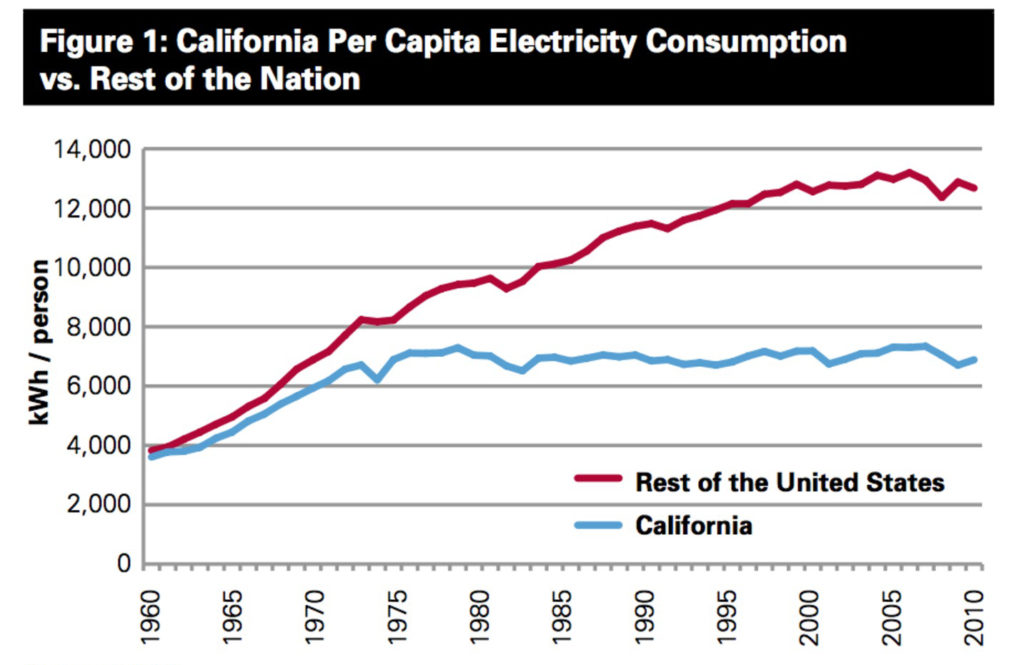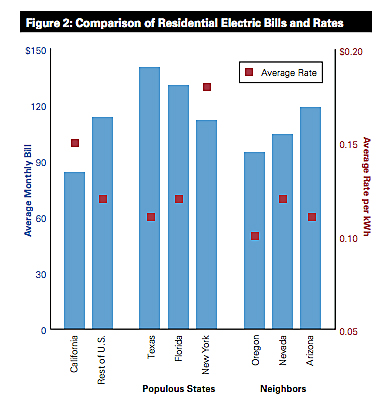edited by Shreya Bhardwaj
Economic prosperity and societal well-being require a safe and reliable supply of energy resources. Energy and mineral resources are vital for the production of goods and services across all economic sectors: agriculture, infrastructure, transportation, commerce, healthcare, and tourism, among others. At the same time that energy resources contribute to a crucial nexus of human, economic, and social improvements that are essential to the development and economic growth of every generation, however, they also significantly contribute to climate change. Policymakers across the world are facing urgent and difficult challenges in the energy sector. They need to ensure that access to energy is secure, affordable, and sustainable for all members of society. To achieve these three goals, they can either lead the way and address these challenges, or they can opt for a more passive role by leaving it to the markets to address them. While markets can be efficient and develop cost-effective energy supplies, the energy sector is also full of political and economic uncertainties that call for an active government role. Achieving objectives such as – reducing emissions, achieving energy security and decreasing reliance on imported fossil fuels, attaining a higher rate of energy produced from renewables, etc.- without creating political rift needs established policy frameworks. Therefore, establishing these frameworks and conditions such as market rules, pricing mechanisms, taxes, tradable allowances, and subsidies is fundamental for any energy policy action.
In most cases, governments at the national level possess control over a wide array of departments and agencies that enable them to communicate and co-ordinate across all policy domains affecting the energy sector. They have the ability and the authority to set integrated approaches based on a strong co-ordination among different stakeholders. They can bring together diverse stakeholders from different policy domains—including environment, development, industry, transport, construction, agriculture, investment, science and technology, and education, as well as energy itself—in order to achieve a robust energy policy that ensures access, affordability and, sustainability. For these reasons, energy policy would be effective if administered by a government body that will work with the private sector and hold the responsibility of aligning markets with energy sources while taking into account economic and societal costs. Government intervention in the energy sector is essential because regulations ensure that negative externalities are properly priced into market signals, so utility companies and consumers can make better decisions without requiring command and control regulations from the government. The most compelling reason for government intervention is the energy market’s failure to consider the detrimental effects of the externalities such as pollution causing health risks among residents.
Energy pricing adjustments, energy access and sustainability are dilemmas almost every country faces; energy should be priced appropriately to cover the full cost of supply, while remaining sustainable and affordable to all. Consumers need to have access to a sufficient quantity of energy, delivered in an affordable, reliable, and environmentally friendly manner. Germany’s feed-in tariffs (FIT) policy, which started in 1991 is an example of how a government can address this challenge. This policy facilitated the transition to renewable energy by making solar and wind accessible and affordable to a broader population. The policy supports renewable energy investment by offering long-term contracts to energy producers. The FITs guaranteed a fixed compensation for the power produced from renewable sources, such as wind or solar, which was highly effective in promoting the growth of photovoltaics. By 1994, nine European countries had enacted feed-in tariff polices. This policy became the Renewable Energy Act of 2000 and it continues to remain a major driver of the German renewable energy market as a model of how economic policies can encourage the private sector investment in renewables.
While economic policies help face the challenge of energy access and affordability, they are not sufficient to address energy security issues. Global energy demand is expected to increase dramatically over the next 20 years, due to the growing population and the increasing growth rates of emerging economies such as India and China. It is expected that energy consumption will increase by over half (53 percent); global energy demand will increase by 37 percent by 2040; and a large number, about 1.5 billion, of the world’s poor will continue to lack access to electricity. The global energy system will face the challenges of this growing demand, and consequently a gap between energy supply and demand may develop.
While the demand side is mostly related to the nation’s economic, environmental, and societal conditions, energy supply capacity is closely linked to global economic and geopolitical turmoil. Prudent energy planning by the government is key to help bridge the demand-supply gap. It helps government agencies formulate robust policies that can ensure accurate and long-term forecasting of energy demand and supply. The public sector is a key actor to develop integrated energy systems and bring the rest of actors together through policy implementation processes. A government energy plan can help the concerned players in the sector, such as utility companies, develop an effective energy strategy that is based on timely and informed decisions. The energy plan will allow different actors to analyze the existing limitations, identify and evaluate available options, calculate costs, and assess trade-offs, in order to develop different scenarios to mitigate the supply turmoil risk. Consider Pakistan’s interminable power crisis. Because of poor energy planning, Pakistan suffers from a widening supply-demand gap, estimated at 7000 Megawatts in 2015, leading to 8-12 hours of load shedding daily and rolling blackouts that disconnect large number of users from energy supply. This energy crisis is the largest drain on Pakistan’s economy, shaving off up to 2 percentage points from the country’s annual gross domestic product growth and negatively impacting its trade and its textile industry. Many factors contribute to this power crisis, such as circular debt and old transmission networks, but the primary cause is the government’s lack and inaccuracy of forecasting and planning. This illustrates the necessity for Pakistan’s government to develop an integrated energy plan that will build an effective energy system. Integrated planning will also support wise and efficient investment decisions in the country. Moreover, it will help increase efficiency in energy production and use and will also help decrease Pakistan’s reliance on imported fossil fuels.
Governments have a crucial role in tackling climate change through energy policy. They can formulate different policies – including investment policies, targeted subsidies, and energy conservation policies – that can advance clean energy-related new technologies, which need extensive capital in order to operate on a commercial scale. Examples of policy instruments and programs that can be built by governmental agencies to advance clean energy technologies include: enabling infrastructure for carbon capture and sequestration; subsidizing renewable technologies, such as photovoltaics and wind; incentivizing research and development activities initiated by large oil companies through tax treatments; creating mechanisms for industry/ university/ government partnerships, such as public/private partnerships; and providing easy access to venture capital for early stage clean energy technologies. One example of a policy modeling interaction between a government’s policy and technological innovation is “Energiewende,” Germany’s ambitious energy transformation policy, which aims to move the country to be at least 80 percent reliant on renewable energy sources of electricity by 2050. Due to “Energiewende”, the renewable energy power mix has grown from a 5 percent share to a third of Germany’s power feedstock, in the last 15 years.
While increases in clean energy innovation address a fundamental goal of achieving the global target levels of emissions, more energy efficiency is indispensable for decreasing emissions of greenhouse gases. Achieving energy efficiency has several financial and environmental benefits without investing in new infrastructure. For instance, more efficient use of fuels, mainly by cars and trucks, accounts for almost 36 percent of avoided emissions; more efficient use of electricity in a wide range of applications (e.g. lighting, air-conditioning, appliances and industrial motors) accounts for 30 percent; and greater efficiency in energy production accounts for 13 percent. In contrast, renewables and biofuels account for 12 percent of avoided emissions, and nuclear for the remaining 10 percent. The transition to energy efficiency does not require large up-front investments but it needs significant behavioral change of both individuals and companies.
Government leadership has a key role in promoting this change by developing policies encouraging more efficient production and use of energy. California’s state energy efficiency model is proof of how government leadership can alter energy consumption of end-users, lower their utility costs, and clean their air. According to the Natural Resources Defense Council (NRDC) fact sheet, California avoided the construction of at least 30 new power plants, which is equivalent to cutting climate-warming carbon spewed annually from 5 million cars. The state succeeded in achieving a nearly constant rate of per capita electricity consumption over 40 years, while the other 49 states increased their average per capita use by more than 50 percent during that same interval (Figure 1). Since the 1970s, Californians have saved $65 billions. In 2011, residences in California spent $20 less every month than did households in the rest of the United States—or $40 below what households in Texas spent (Figure 2).


Ultimately, governments alone are incapable of addressing the current energy challenges. A hybrid and integrated approach between public and private sectors is essential for government agencies to achieve this goal. This public/private cooperation will enable stable and long-term regulations that are crucial for the private industry in order to predict financial risks, innovate and attract more investments. For instance, the announcement of federal and private sector cooperative actions on grid integration of renewable energy resources during the Summit on Scaling Renewable Energy and Storage with Smart Markets in June 2016 helped attract $130 million investments. Public/private cooperation also helps implement effective policies that goes beyond compliance with end of pipe pollution controls, to incentivize innovation. For example, while long-term cooperative policies make automobile companies manufacture hybrid cars, short-term regulations would make the same companies produce gas-fueled cars with a filter on the tailpipe. In addition to enabling investments and innovation, public/private cooperation ensures a sustained long-term relationship between government agencies and energy companies and creates more transparency through information sharing and exchange of knowledge.
There is clearly a crucial role for public agencies to define any nation’s energy policy. The same reasoning can be made for the private sector, but the final say on who should take the lead rests on what is the primary goal of the nation, where the gaps lie, and to what extent its government want to serve the public interest, which is accessible, affordable and sustainable energy for all.
